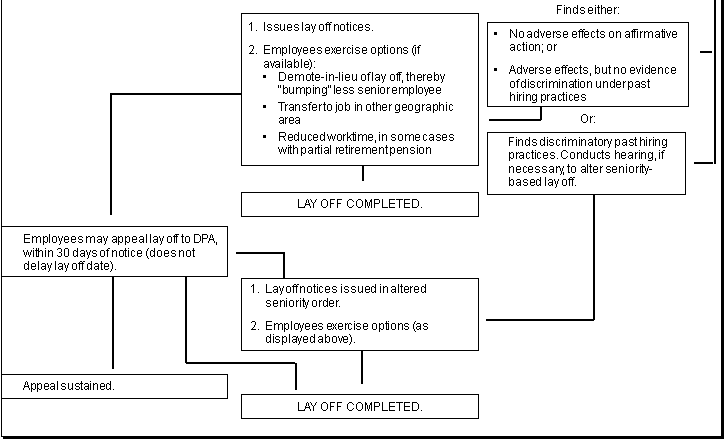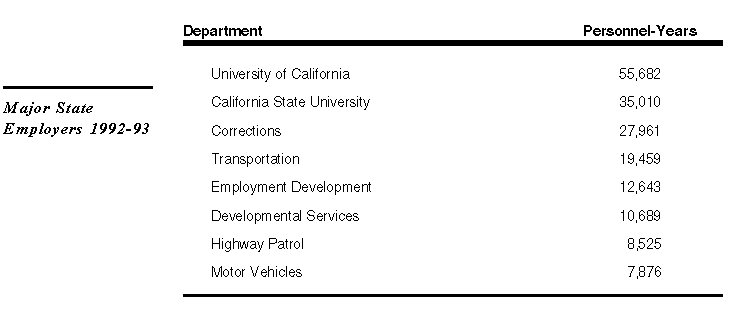
 Legislative Analyst's Office
Legislative Analyst's Office
In the 1992-93 fiscal year (the most recent complete data), state government employment exceeded 260,000 personnel years. (For example, two half-time employees equal one personnel-year.) Higher education faculty and staff comprised more than one-third of this total. The chart below lists the state departments with the largest number of employees in 1992-93. These eight departments represent two-thirds of state government employment.

Between 1988-89 and 1992-93, state government employment grew by 12,766 personnel-years (5.1 percent). As shown in the following two charts, most of this growth was concentrated in two departments--Corrections and Transportation--while employment in higher education declined.
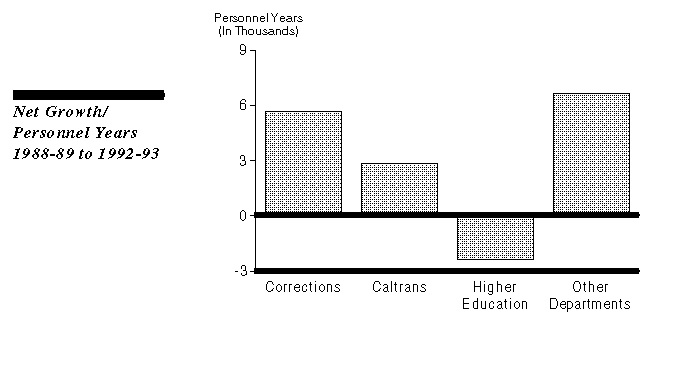
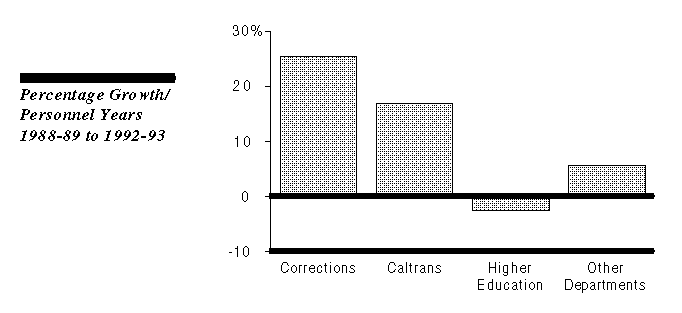
The key cost element of most state programs is compensation (salaries, wages, and benefits) of public employees. The Governor's Budget projects spending $11.3 billion for compensation of state employees in 1994-95 (including higher education), or 69 percent of the $16.4 billion allocated to state operations. A similar share of the $14.2 billion allocation for local assistance to schools and community colleges ultimately funds compensation of teachers and other employees. Including other local assistance expenditures, we estimate that close to half of all state expenditures ultimately funds compensation of state and local government employees.
Excluding higher education, legislative staff, and elected officials, state employee compensation costs total nearly $9 billion. The following charts provide detail on these costs.
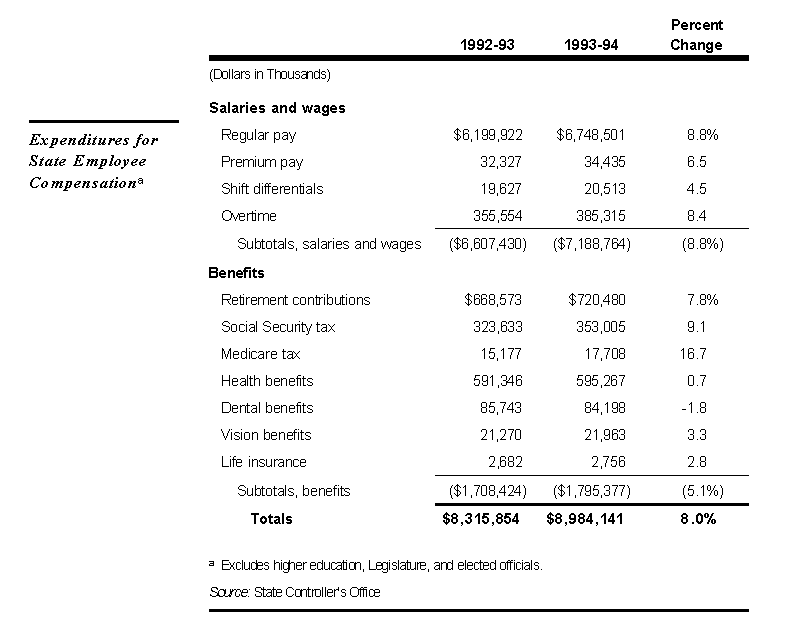

California's first system of state civil service employment was created by statute in 1913. That system was replaced by the current system of civil service in the November 1934 election. The voters approved Proposition 7, which added what is now Article VII to the State Constitution.
Under civil service, all appointments and promotions must be made under a general system based on merit determined by competitive examination. Basically, all state employees are in civil service unless specifically exempted by the Constitution. The Constitution provides many such exemptions. For instance, all employees of the Legislature, the judicial branch, the University of California, the California State University, the Governor's office, and the Lieutenant Governor's office are exempt from civil service. The Governor's various appointments also are exempt.
As of December 31, 1993, there were 683 staff (excluding boards and commissions) appointed by the Governor and exempt from civil service. Of this total, there were 146 staff in the Governor's office and in the Office of Planning and Research. The remaining 537 exempt staff were in departments and agencies, including 153 in positions converted from civil service under the provisions of Government Code Section 12010.6.
These exempt staff have important positions within the administration. Most are department directors or deputy directors who essentially run the executive branch of government on the Governor's behalf. The following figure summarizes these appointments.
The Governor also makes numerous appointments to boards and commissions. Many of these positions involve part-time duties with little or no salary.
State law (beginning with Government Code Section 19889) provides for a category of civil service appointment called career executive assignments (CEAs). The CEA classification is a hybrid between civil service and exempt appointments. State law specifies that the CEA classification is for positions of "a high administrative and policy influencing character."
An appointment to a CEA position must be an employee who has permanent civil service status. The rules governing the competitive examination and selection for a CEA position, however, give more discretion to the administration than do the rules governing other civil service appointments. Moreover, employees in a CEA position do not enjoy the same protections against demotion or transfer accorded to other civil service positions. An employee demoted from a CEA, however, has return rights to his or her prior civil service position (or a comparable position).
As of September 1994, there were 911 state employees in CEA positions.
State law, administrative regulations, and collective bargaining agreements require the state to follow a specific process to lay off civil service employees. The flow chart on the following page illustrates the state lay off process. This process is applicable where a state department must reduce a large number of staff and has exhausted available alternatives to lay off, including voluntary placements of employees with other departments and voluntary reduced work time for employees interested in working less than full time. According to the Department of Personnel Administration, the lay off process can take from four to eight months to complete.
During the three fiscal years 1991-92 through 1993-94, the state (excluding higher education) laid off 294 persons. Many other state employees, however, faced the possibility of a lay off and were placed on State Restriction of Appointments (SROA) lists, giving them priority for hiring by other departments. Almost 14,000 employees were placed on SROA lists during this time period, and about 7,000 so far have been hired by other departments.
CIVIL SERVICE
Most State Employees Fall Under Civil Service
Governor's Appointments Are Exempt From Civil Service
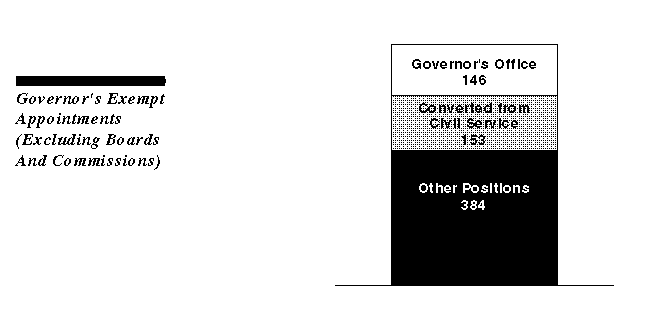
Career Executive Assignments
State Employee Lay Off Process

